The announcement of the collaboration between Marni and HeM for the next Spring has spread all over the web in a few hours. Everybody is happy about it, but are you sure you know Marni?
 |
Consuelo Castiglioni |
 |
| SS 1999 – FW 1999 |
She began with an annual winter furs collection, but soon she launched even the spring-summer line, and in 1999 Marni was established as an independent brand produced by the family firm.
The clothing line took the place of the furs. It became universally recognizable thanks to the fabrics layering and the print patterns with old-fashioned flowers (featured by thick dark edges), mattress stripes (large and vertical), or abstract and geometric graphics with the ’50s and 60’s vintage influences.
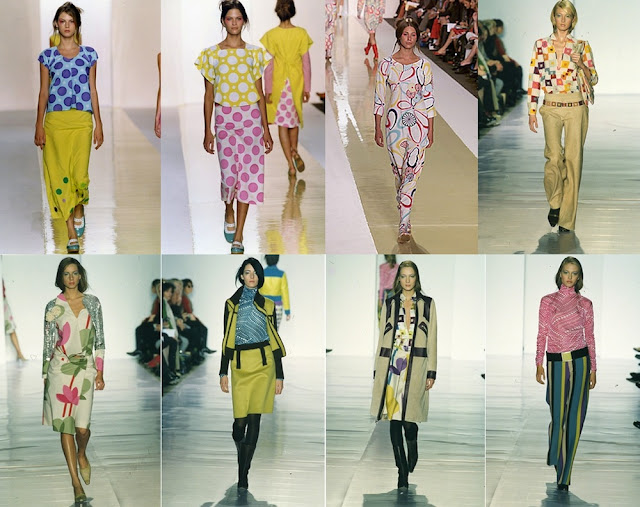 |
| SS 2000 – FW 2000 |
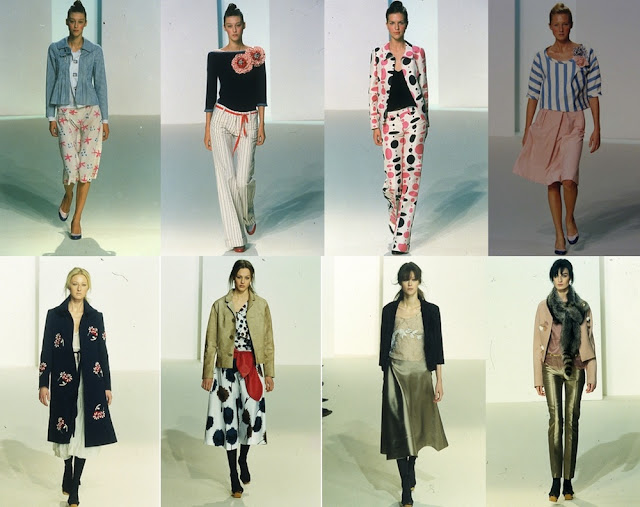 |
| SS 2001 – FW 2001 |
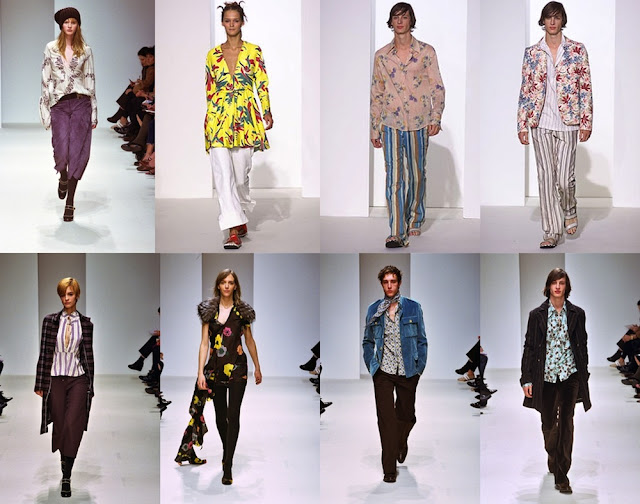 |
| SS 2002 – FW 2002 |
 |
| SS 2003 – FW 2003 |
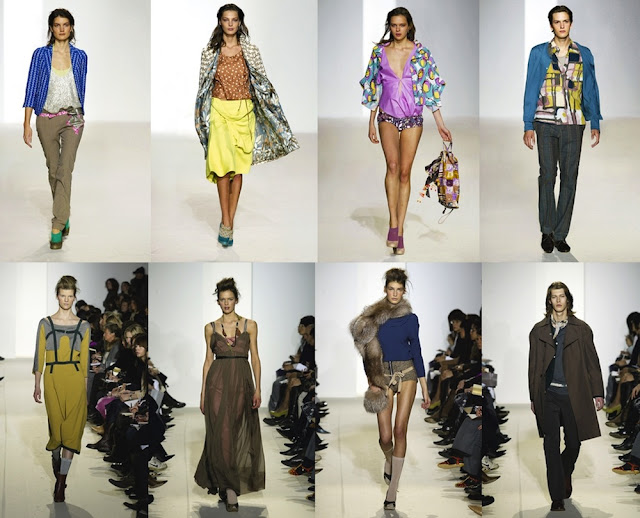 |
| SS 2004 – FW 2004 |
The color contrasts are another founding element of Marni’s style. The shocking and fluo colors, such as fuchsia and lemon, stand out on the dark nuances, mostly black, blue, gray, or even brown slime and olive green. The dresses often have a sort of fake-messy-look originated by the mix and match of smooth and square silhouettes, and they are often enriched with bijoux made of wooden or plastic pieces shaped like flowers and leaves.

|
| SS 2005 – FW 2005 |
 |
SS 2006 – FW 2006 |
In September 2011, Marni announced its first foray into the world of fragrances, clutching a multi-year licensing agreement with Estée Lauder Companies. The debut of the first product is planned for autumn 2012.
At the end of November 2011, Consuelo Castiglioni surprised everybody about her teaming up with HeM for the SS 2012 guest designer collection. She said: ” We have created a complete Marni wardrobe combining tribal and Bauhaus graphics with functional and sporty elements.” We have to wait for March 8, 2012, to discover the collection in 260 HeM stores worldwide.
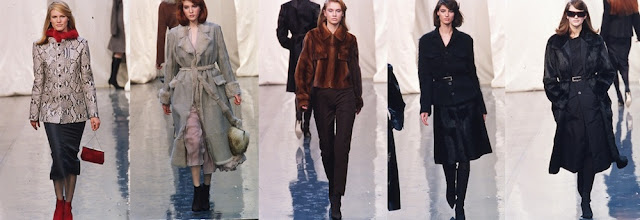

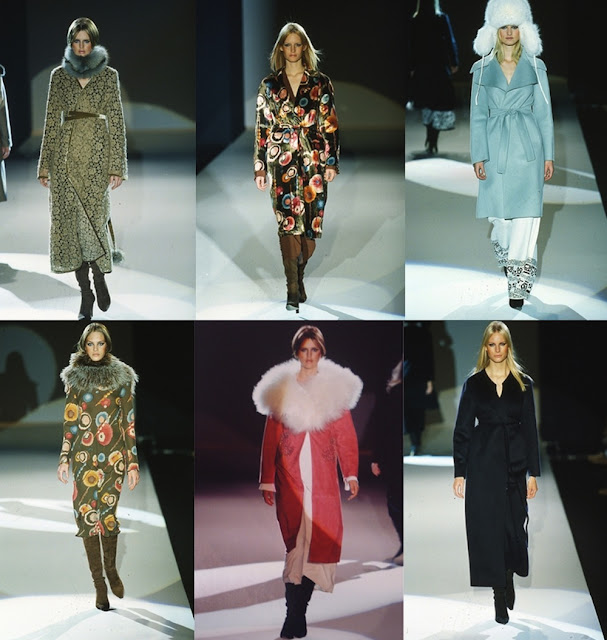








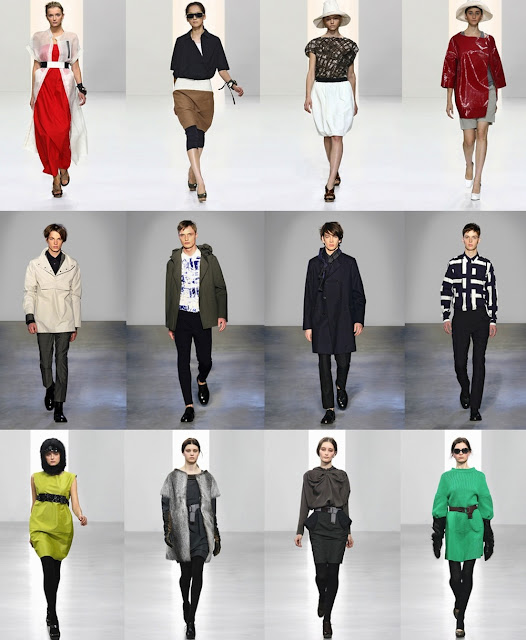
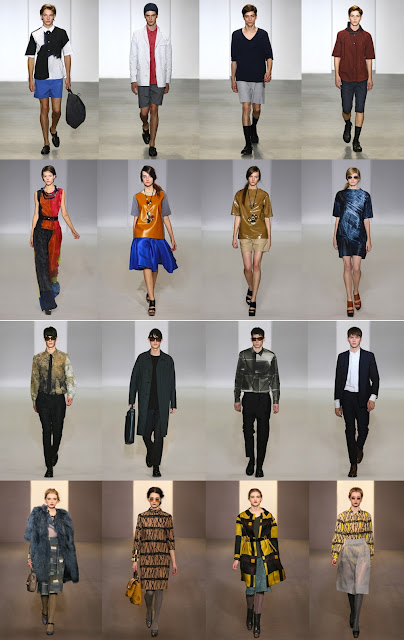

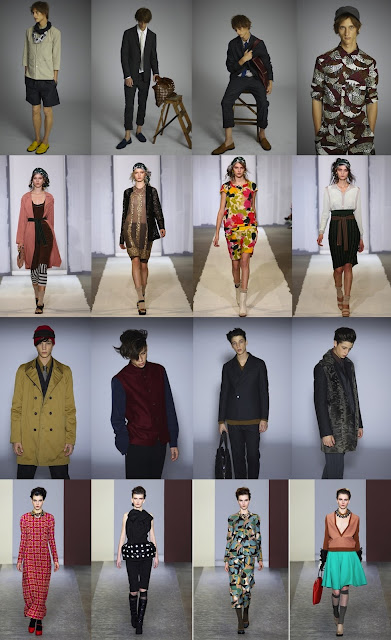
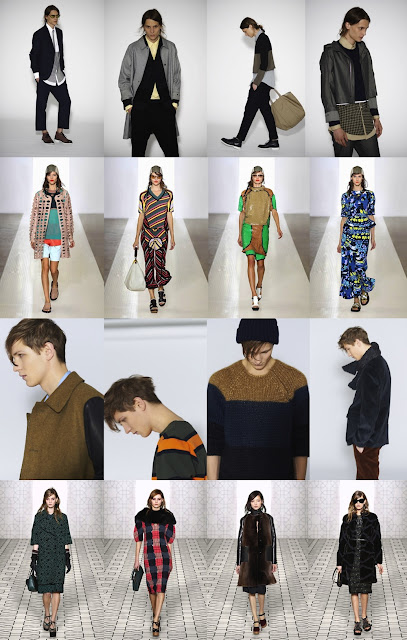



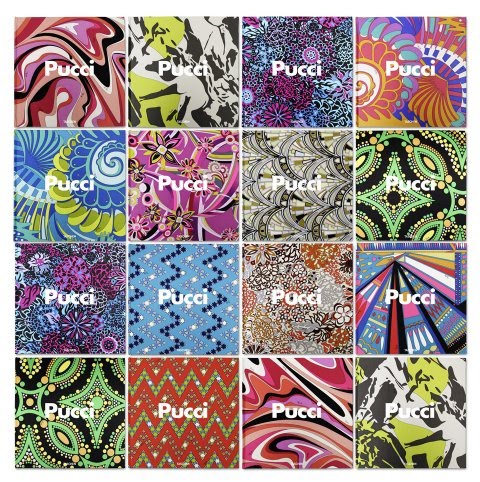
<3 Post sempre ULTRA top e scritti benissimo!
comunque sia sono veramente troppo curioso di vedere il risultato di questa collaborazione. Marni è veramente uno dei Brand più eleganti e Smart che ci siano in italia. Stampe semplice, decise ma che riescono ad attirare l’attenzione proprio per la loro “leggerezza”. Nonostante sia un marchio non molto “popolare” come poteva esserlo Versace penso che sia una grande opportunità per il Marni di uscire fuori anche se, ad essere sincero, credo che H&M stia correndo troppo con queste collaborazione rovinandone la natura stessa.
baci
roby
attendevo che la metessi tu questa fantastica notizia, mi piace molto come scrivi, grande Ale…bacioni…kiss
http://WWW.ZAGUFASHION.COM
Ale.. Tu sei un’enciclopedia! Ottimo post!
Mi piace. Sono delle linee molto giovani e fresche. Ho detto la cosa più scontata della terra ma è la verità, forse è per questo che è così apprezzata negli States. Potrebbe venirne fuori una buona collaborazione, e Marni uscirebbe anche dalla nicchia 😉
Fantastico post io sono una malata di Marni da sempre…davvero completo e d’effetto…un bacio
http://www.rockandfrock.com
Come sempre post accurati e precisi.
Bellissimo ripercorrere la storia di un Marchio attraverso le foto delle collezioni, vedere come cambiano gli stili e i tagli ma riconoscere il sapore di continuità da un anno all’ altro.
Complimentissimi Alessandro, come sempre…
Robi
Bellissimo lavoro!
la notizia di Marni per H&M mi ha entusiasmata, nonostante il mio calante interesse per le capsule di questo genere! Questa volta credo che il marchio svedese abbia colpito nel segno, cosa che non era successa per Versace…. nel futuro vedo l’ascesa di brand come Marni, Malìparmi e Celine…c’è bisogno di qualità e linee ben costruite!
un abbraccio
Veronica
ciao,
eccomi !
come sempre bellissimo post, completo e dettagliato.
Mi chiedo che senso abbiano queste “collaborazioni”…. con questi brand di lusso…..mi piaceva molto andare da H&M e girare fra i vari reparti cercando di scoprire la cosa carina e di buona qualità , e spesso ci
riuscivo .Da qualche tempo la qualità di H&M è davvero peggiorata , trovare una qualsiasi cosa in un tessuto che non sia sintetico è diventata una cosa rarissima .E’ forse cambiata la loro strategia aziendale ? …….perchè puntare sulle collaborazioni ? che senso hanno ? H&M ha un target preciso , la cliente H&M non sarà mai la cliente nè di Lanvin , nè di Versace nè tantomeno di Marni. Questo fenomeno isterico delle ragazzine che fanno la fila per acquistare un capo di un brand famoso è ormai superato.
Perchè invece questi brands non cambiano le strategie commerciali ? rendendo accessibili ai più le loro collezioni,magari differenziando le linee (vedi Armani..ed altri).
Ti assicuro Alessandro che vedere un Marni da H&M mi fa proprio malinconia …
ave
Ciao ragazzi! Come al solito grazie dei commenti, ma soprattutto dei complimenti! Sono contento vi piacciano i post di ricerca e di storia della moda.
@Roby: sono contento della collaborazione “democratic”, anche se ammetto che vicino Firenze ho la fortuna di avere l’outlet perciò potrei prendere un pezzo Marni senza troppi sacrifici per il mio portafogli 🙂
@Ave: H&M ha molto successo solo ed esclusivamente per i prezzi e per le imitazioni di fantasie e tagli che riesce ad offrire. Certamente non stiamo parlando di qualità dei tessuti e dei filati. Posso dire però che almeno un passo avanti è stato fatto riguardo il cotone utilizzato, che è biologico, ma soprattutto etico(senza sfruttamento dei lavoratori). Purtroppo la percentuale di acrilico, elastane, poliestere, poliuretano ecc… sta dilagando sempre più, ma non solo in H&M. All’inizio si trattava di percentuali minime che servivano ad evitare che i capi si allargassero o stingessero, ma adesso siamo proprio alla degenerazione totale con picchi del 70% e 80%.
La tua idea di abbassamento prezzi sarebbe la via più facile da intraprendere, ma dopo su che entrate potrebbero contare i vari marchi? Le linee secondarie potrebbero andare anche bene, ma poi si riproporrebbe lo stesso problema, perché pagare 100€ una sciarpa made in china firmata Armani Exchange o Armani Jeans in 70% poliestere e 30% lana? Non ne vedo l’utilità, si paga davvero solo il marchio, il suo valore aggiunto. Ma allora tanto vale prendere la sciarpetta di H&M.
Le collaborazioni e le capsule collection sono utili ai grandi marchi non certo per la qualità dei tessuti o dei tagli, ma solo per il grande riscontro pubblicitario che ne segue. Come è stato dimostrato dall’ultima collezione Versace, in molti (ho letto valanghe di banalità su blog, che mi veniva da piangere dalla superficialità con cui è stato trattato l’argomento!) non hanno capito che la collezione riproponeva capi degli anni 90 presi dall’archivio di GIANNI VERSACE (e non di Donatella, che allora si occupava dello styling e delle pubblicità!!!) e che serviva per avere un ritorno mediatico che potesse far annunciare in grande stile anche il rilancio della linea VERSACE COUTURE nella prossima settimana haute couture parigina! In questo modo le ragazzine isteriche in coda, si sono potute avvicinare ad un mondo inarrivabile ed è solo il primo tassello per costruire una sorta di fidelizzazione al marchio che le porterà dapprima a comprare gli accessori e i profumi, e successivamente “da grandi” anche le collezioni Versace originali.
Questo vale per Versace, come per Lanvin, Jimmy Choo, Lagerfeld, Victor & Rolf, Mattew Williamson, Sonia Rikyel, Roberto Cavalli e tutti gli altri marchi chiamati a cooperare con H&M. A Marni in definitiva servirà ad uscire dalla nicchia e forse questa collaborazione potrebbe essere anche una strategia di marketing per avere una buona pubblicità del marchio proprio prima di lanciare il profumo nell’autunno 2012!
Ovviamente questo è il mio parere, poi ognuno è libero di pensarla come vuole!
Haha, effettivamente con quel commento si potrebbe scrivere una tesina!
Di sicuro la collezione dal punto di vista pubblicitario porta, ma mi chiedo: nel cliente del brand vero e proprio, come viene vista la collaborazione con HM?
E qual è la bontà della collezione che ne viene fuori (non solo dal punto di vista di materiali etc): una sbobba commerciale o no?
La verità forse è che ho cercato di trovare una risposta un po’ troppo oggettiva a una questione soggettiva, perchè ognuno ha il suo concetto di brand (deve essere esclusivo, non me ne frega niente, basta sia firmato…), il suo concetto per definire una buona spesa (qualità, prezzo, qualità-prezzo…) e così via.
Ps.: concordo con te per quanto riguarda la qualità dei follower piuttosto che la qualità: fortuna che ci sei tu a risollevarmi il blog!
I think we are all excited for this collection! I have a feeling it will be amazing..
All the best, ~Angel
post utile. le pagine della storia della moda spesso vengono ingnorate o dimenticate.
http://nonsidicepiacere.blogspot.com/
io adoro questo brand..i colori, le linee i mix!!
Grande Ale, questo post mi piace tantissimo..non vedo l’ora di vedere la collezione per H&m, penso che sarà la prima volta che mi metterò in fila per accaparrarmi tutto!
un bacioo
http://fashion-whatelse.blogspot.com/
nice post chum
http://www.pinstripeprince.blogspot.com
Bravissimo come sempre Ale, sei informatissimo e tratti sempre gli argomenti con convinzione e sopratutto con vere argometazioni.
Sono daccordo anch’io che le varie collaborazioni di H&M con i vari marchi sia una politica puramente pubblicitaria e poco commerciale per entrambi.
Prima di tutto perchè i pezzi sono davvero pochi e distribuiti in modo quasi selettivo e poi perchè queste collezioni durano in negozio meno di 24 ore.
(a Padova la collezione Lanvin A/I2010 alle 9,20 era già terminata, ho spogliato il manichino per avere l’ultimo imperdibile completo uomo).
Tutto questo serve per far parlare blog, riviste del settore quasi gratuitamente e sopratutto per creare un ritorno di immagine per il marchio svedese e i vari brands che hanno bisogno di allargare il loro pubblico o di rilanciare il loro stile.
Comunque giovedì ci sarò anch’io in coda a Padova per aggiudicarmi un qualche pezzo di questa bellissima collezione (almeno da foto) poi il resto lo vedremo…
Hello, I’m a fashion student currently doing a research on marni and I found your article very interesting.
Is really hard to find informations about the brand, especially in the beginning of the career.
I’m really interested in the first paragraph, and if you could give me more information about it:
“Consuelo, for the first time, used fur as a fabric, removing the interior linings and making deconstructed volumes after years of enormous shoulder-pads and ladylike silhouettes.”
When you talk about enormous shoulder-pads and ladylike silhouettes, are you referring to the previous decade, the 80’s with its power suit ?
So basically Consuelo was the first to reinterpret the fur to create a looser silhouette in early 90’s? Could we say then that was she to set this trend in the rest of the decade? Because I know she colored fur as never before and in fact I’m the 90’s you can see it different celebrities wearing pink, blue fur.
Thank you for your time. Also if you have other sources that I can look it would be great.
Have a lovely evening
Dear Yumi, Thanks for your lovely comment, and I apologize for my late reply.
I’ll answer point by point to your questions trying to be as much clear as possible.
1) When you talk about enormous shoulder-pads and ladylike silhouettes, are you referring to the previous decade, the 80’s with its power suit ?
– Yes. You have to imagine that she was among the Italian fashion designers who were changing the fashion rules and introducing a new aesthetic.
2) So basically Consuelo was the first to reinterpret the fur to create a looser silhouette in early 90’s?
– It’s always tough to say “the first” because, in those times, there were hundreds of brands or family businesses (especially in Italy) that were into the “fur industry.” For example, I can also name Fendi with the late creative director Karl Lagerfeld who invented the Astuccio fur in the 70s and started to design furs without linings at the end of the 80s. (you can read more here >>> https://aeworld.com/fashion/in-focus/karl-lagerfeld-50-years-collaboration-with-fendi/)
3) Could we say then that was she to set this trend in the rest of the decade? Because I know she colored fur as never before and in fact I’m the 90’s you can see it different celebrities wearing pink, blue fur.
– Once again, I would definitely say that Consuelo was AMONG the designers who created this new aesthetic for the ’90s in terms of silhouettes and fittings. You have to imagine that different movements and trends feature every decade. In that specific decade, minimalism spread everywhere with Tom Ford at Gucci, Prada, Helmut Lang, Jil Sander, Calvin Klein, and Marni. But the 90s were also featured by the grunge style by Marc Jacobs, as well as the deconstructivism brought by Margiela and all the alternative perspective of the “Antwerp 6” group. On the other hand, there are the imaginary worlds created by Gianni Versace, then followed by John Galliano and Alexander McQueen. Going back to your second part of the question, however, I wouldn’t focus on the use of colored furs, because one of the main designers to use colored furs was Yves Saint Laurent already in the 70s, with his most criticized collection called “the Scandal collection” (>>> https://museeyslparis.com/en/biography/la-collection-du-scandale).
I hope this can help you with the research.
Best,
Alessandro